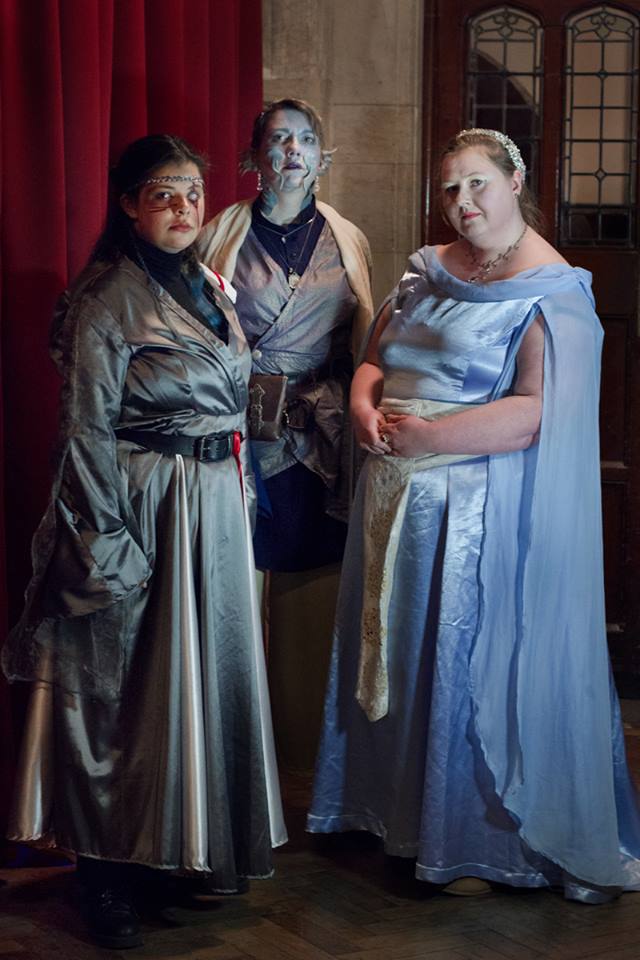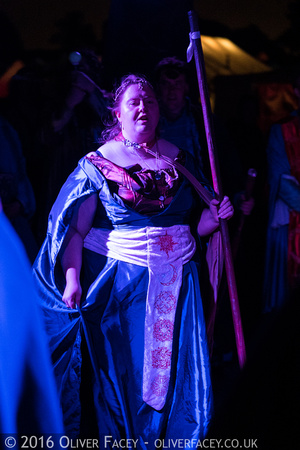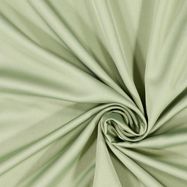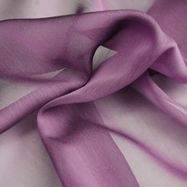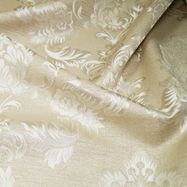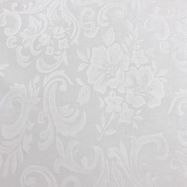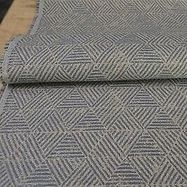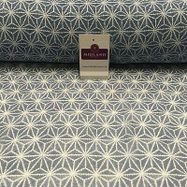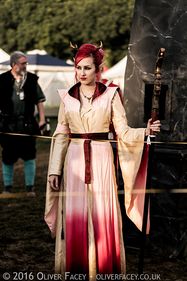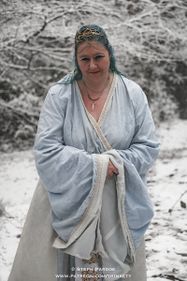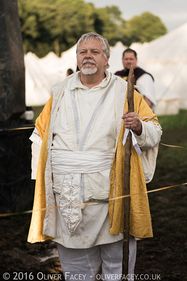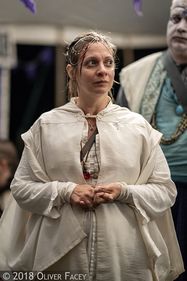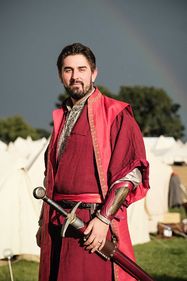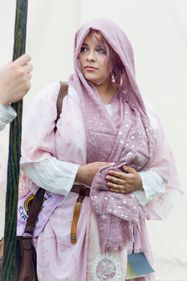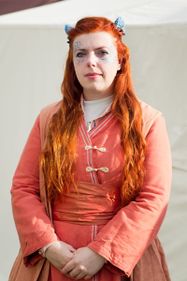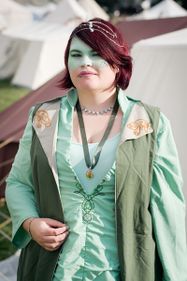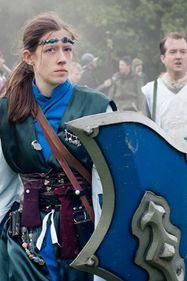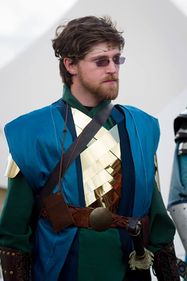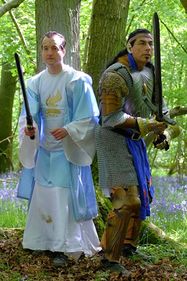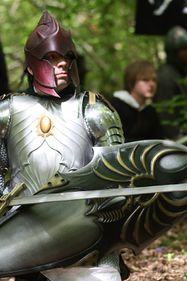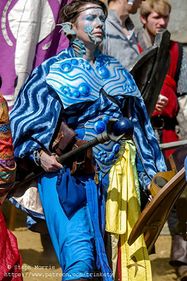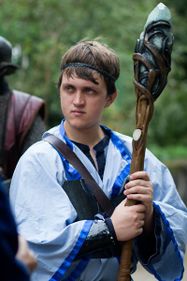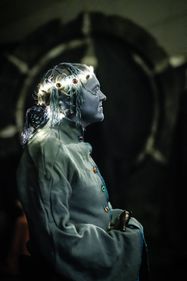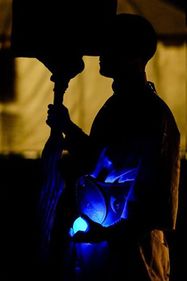Urizen look and feel
Overview
Elegant, graceful, serene, refined, poised, focused, subtle
The Urizen look draws heavily on classic fantasy images of high elves and scholastic wizards. Robes are common, and most folk wear several layers to protect against the cooler environment of their mountain homes. The nation emphasizes control and poise, and citizens of Urizen try to project a calm, serene exterior. Urizen citizens prize beautiful garments, made from the finest materials available, but they eschew the more flamboyant approach of the League and the Brass Coast, preferring clothing that is exquisitely made rather than ostentatiously adorned.
Most outfits employ light or pastel colours with layered garments in similar shades. Contrasting or complementary colours are reserved for highlights or decoration. Some spires keep the Urizen style of layered shades of similar hue but adopt a rich, dark shade like a midnight blue or wine red for the base colour.
Decoration is popular on clothing, weapons, implements and armour but tends to be stylised or even abstract, seeking to express the essence of something rather than reproduce it. Complex embroidery of looping spirals, or representations of the stars and constellations are particularly popular. These are usually in metallic shades or subtle shades designed to complement the whole outfit.
Garments and Accessories
Layered Robes: The iconic look of Urizen is long robes in layers, with the outer robes typically cut to show off the lower layers underneath. This can be achieved by having an open front or leaving the hems progressively shorter on the outer layers, to create a graduated effect. Often the outer layer of robes will have short, split, or voluminous sleeves (or even be sleeveless!) in order to show off closer fitting long sleeves underneath. Lower layers are often fastened close to the body with a belt or sash, allowing the outermost robe to hang loose. Outer layers are often cut to swirl elegantly to emphasise poise.
While the archetypal Urizen robes are floor length, the "Anvil cut" of mid-calf length is popular for Urizen attending summits, since the fields of Anvil are often wet and muddy. Cloaks are sometimes worn for warmth, usually coloured to match the wearer's robes. Heavier or waterproof materials are popular at Anvil.
Sash: Wide belts and sashes are used both to fasten robes and to add detail to outfits. An ideal sash can be narrow like a belt or wide enough to hold a design, but is not so wide that it starts to look like a bodice or be stiffened like an obi.
Spire or Stargazers belt: Some Urizen hang a long vertical decorative pennant, often heavily embroidered, from the centre of their sash or belt. Each pennant is unique but it is usually referred to as a spire belt if decorated with symbols representing a person's spire or a stargazers belt if decorated with stars or constellations.
Trousers: When worn, trousers are either tight like leggings, or loose and flowing to look as if they were another underlayer of robes.
Hood or Hat: A hood is a common way to cover the head in Urizen. They are usually part of a robe; a heavy outer robe with a hood is the ideal way to protect against the cold and the rain. You can also use a wide, flat-brimmed hat like a traditional petasos. These are usually made of felt, but can be other materials and can have additional fabric draped from the brim to tie the hat on or provide additional shade or decoration.
Shawl or Scarf: Some Urizen wear a shawl or scarf designed to be pulled up on to the head to shelter it from the elements. It is usually draped over the shoulders when not in use rather than wrapped round the neck. Shawls and scarves are often decorated with designs intended invoke the Net of the Heavens
Jewellery: Silver and gold jewellery is common, usually worn around the neck, brow or hair. The ideal pieces are long interlocking chains suggestive of a net. Jeweled circlets representing the power of the will or the mind are also common.
Colours and Materials
Base Colours: Most individual garments use a single colour, either white, a light shade (such as pale green or pastel yellow), or a rich dark shade (like burgundy or ink blue). Urizeni weavers have mastered the art of using iridescent gloaming to create ombré effects in the most desirable and expensive fabrics.
Shades: The ideal outfit is composed of pieces belonging to the same colour or colour family, for example four shades of blue ranging from sky through to midnight or two purples paired with two pinks. The emphasis is on elegance and simplicity in colour choice, rather than the brash contrasts of nations such as Dawn, Highguard, or the Brass Coast.
Lustrous Fabrics: Materials in Urizen are usually plain rather than patterned, aiming to show off the fineness of the cloth itself and any decoration on it. Fabrics are often shiny - satins and silks are popular - with cotton sateen providing a good compromise between sheen and durability. Shot fabrics such as shot silk and shot dupion are favoured for the iridescent effect they create.
Damask: Damask, patterned silk, and jacquard are also popular but always using one colour throughout, so that the pattern subtly catches the light, rather than being bold ornamentation.
Patterned Weaves: Although less common than plain materials, fabrics with a subtle pattern using pale colours are used, especially those with a regular geometric pattern.
Practical Materials: The high mountains of Urizen are cold and finely woven wool of any weight is worn whenever warm costume is needed. Thicker cottons and linen under armour are also common when preparing for battle.
Gallery
Battle
The ideal Urizen armaments are inspired by the aesthetics of the Noldor in Lord of the Rings and High Elves warriors in Warhammer Fantasy. Helms tend to cover the head, with curving sections to protect the face and cheeks while shields and armour are shaped and curved in stylised ways to appear more elegant. Armour may be banded or segmented to emphasise flexibility and ease of movement, while Urizen weapons emphasize grace and speed rather than weight and power.
Armour: A breastplate that is fluted or decorated with subtle filigree and curved vambraces and greaves to match is the ideal for an Urizen dressing for battle. The armour made of overlapping bands worn by Elrond in Lord of the Rings is also ideal. Mail is an excellent way to cover gaps in the armour, but can also be worn alone, especially if sandwiched between layers of robes.
Helm: A barbute with either an open or closed face is ideal for Urizen with its distinctive sweeping curves and strengthening ridge. You could also use a traditional hoplite's helm although the heavy plume is better replaced with something more elegant if you can manage it.
Shield: Urizen shields should have stylized shapes and be curved to remain close to the body in use. The historical Pelte but made of metal is a good starting point. Kite shields, heater shields or round shields are all fine, but the more stylised the shape, the better.
Weapons: Swords are favoured in place of axes or maces - the ideal weapons are light and designed for swift graceful movements. The blades used by the elves in the various Lord of the Rings films with their slightly curved blades and intricate decoration are perfect for Urizen. Pole-arms such as spears or glaives are favoured over longer or heavier equivalents like pikes or halberds. Bows are preferable to crossbows, because of the emphasis on graceful movements.
Religion
Urizen priests draw heavily on the hearth magic of Essence to demonstrate their calling and most will adopt a symbol that denotes their approach to the Way. Sashes and stoles are often embroidered or decorated with stylised symbols of the Way. Jewellery incorporating symbols of the Way are employed in nets worn on the head, short-chained pendants, or broaches worn on the chest, to bring the symbol close to the head, the voice, or the heart respectively. Urizen tradition associates each of the seven virtue with one colour, most commonly seen during their Spring festival of flowers, but some priests might use that colour as the dominant hue for their layered robes.
Astronomantic constellations are some of the most popular symbols in Urizen, but there is no simple relationship between the stars and the Virtues. As a result, Urizen pilgrims often adopt one or more constellations that are relevant to their specific approach to the Way and use them to decorate their robes. It is also common to see pilgrims carrying scrolls containing a soul net, either rolled up and tied to the belt or in a scroll case hanging from the belt.
Magic
More than any other nation, an Urizen should not feel they have to be a magician to make use of magical symbols as part of their costume. Magical symbols are often added to garments, using techniques such as embroidery or appliqué. Constellations are more popular than runes or totems and are often mapped out with sequins, gems, or beads made of coloured glass or precious stone.
Mage armour and implements are often decorated with precious stones, semi-precious stones, or crystals, or have magical symbols traced out with filigree. Rods, staffs, and wands are more likely to be made from metal than wood - most often mithril - and they are often surmounted with a carefully shaped piece of dark coloured crystal or stone.
Illumination is an important hearth magic in Urizen and implements, jewellery, and even robes sometimes have lightstones fused into them to create beautiful patterns of light. More than any other nation, the Urizen are likely to carry a light stone or a device with one or more light stones set into it. Urizen magicians often create ornamental light stones that emit light that scintillates or changes colour.
Things to Avoid
Similar Nations
A short paragraph discussing the points of cross-over between the nation and similar costume for other nations. Give positive advice on how to keep the look iconic for this nation, but describe potential pitfalls of costume elements that fit another nation better.
Include standard rubric explaining that all costume is aspirational - so it's fine to use costume that fits another nation if that's the best piece of costume you have available for your overall look - but explain politely that the way to handle this is to simply not mention it rather than making it part of your character background. (This may be better for the main page on costume).
Less Appropriate
Some nations include specific advice on things which are acceptable in-game - but which are not the ideal. Good examples of this are 16th-century costume for the League. If the majority of "costume don'ts" are things that are acceptable but less appropriate then include them in a section titled less appropriate and use the standard language for that. Include images left and right-aligned as appropriate to illustrate the text.
Inappropriate
Some nations include specific advice on things which are not acceptable in-game. This is a much stronger prohibition than "less appropriate", it is simply not a good idea to use the White Hand on any kit in the Imperial Orcs for example. If the kit is something we do not wish someone to use at the event, then we should use language that is honest about that, an use this section rather than a "less appropriate" section.
Useful Links
Tutorials
A set of bullet point links to good tutorials on how to make a good costume, or how to make specific costume pieces.
- Urizen costume design talks about layering robes
Traders
A set of bullet point links to traders websites who produce iconic kit for that nation. We must exercise judgement here and also avoid including links for the sake of it. If we can't find a trader that sells iconic Urizen costume, then skip this section, don't link to a website of stuff that is "ok-ish".
Further Reading
Core Brief
Additional Information
